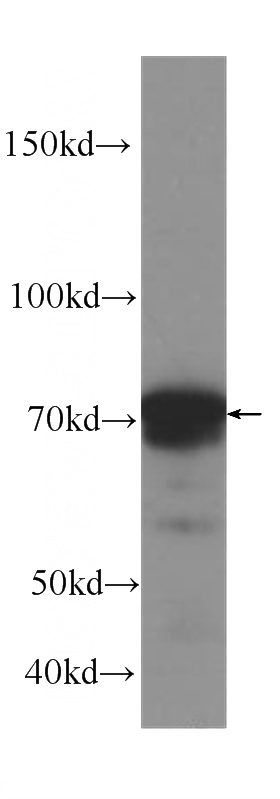-
Product Name
OPTN antibody
- Documents
-
Description
OPTN Mouse Monoclonal antibody. Positive WB detected in human heart tissue. Observed molecular weight by Western-blot: 70-74 kDa
-
Tested applications
ELISA, WB
-
Species reactivity
Human; other species not tested.
-
Alternative names
AAT4 antibody; DKFZp686D10126 antibody; DKFZp686D19237 antibody; E3 14.7K interacting protein antibody; FAA4 antibody; FIP 2 antibody; FIP2 antibody; FLJ35232 antibody; GLC1E antibody; HIP 7 antibody; HIP7 antibody; Huntingtin yeast partner L antibody; HYPL antibody; KIAA0866 antibody; MYH11 antibody; Myosin 11 antibody; Myosin heavy chain 11 antibody; NEMO related protein antibody; NRP antibody; optineurin antibody; OPTN antibody; SMHC antibody; SMMHC antibody; TFIIIA INTP antibody
-
Isotype
Mouse IgG1
-
Preparation
This antibody was obtained by immunization of OPTN recombinant protein (Accession Number: NM_001008212). Purification method: Protein G purified.
-
Clonality
Monoclonal
-
Formulation
PBS with 0.02% sodium azide and 50% glycerol pH 7.3.
-
Storage instructions
Store at -20℃. DO NOT ALIQUOT
-
Applications
Recommended Dilution:
WB: 1:500-1:5000
-
Validations

human heart tissue were subjected to SDS PAGE followed by western blot with Catalog No:107346(OPTN Antibody) at dilution of 1:1000
-
Background
OPTN, also named as FIP2, GLC1E, HIP7, HYPL and NRP, plays a neuroprotective role in the eye and optic nerve. It is probably part of the TNF-alpha signaling pathway that can shift the equilibrium toward induction of cell death. OPTN may act by regulating membrane trafficking and cellular morphogenesis via a complex that contains Rab8 and hungtingtin (HD). OPTN may constitute a cellular target for adenovirus E3 14.7, an inhibitor of TNF-alpha functions, thereby affecting cell death. Defects in OPTN are the cause of primary open angle glaucoma type 1E (GLC1E). Defects in OPTN are a cause of susceptibility to normal pressure glaucoma (NPG). OPTN mutated in adult-onset primary open angle glaucoma. It supports the protective role of OPTN in the trabecular meshwork.
Related Products / Services
Please note: All products are "FOR RESEARCH USE ONLY AND ARE NOT INTENDED FOR DIAGNOSTIC OR THERAPEUTIC USE"
